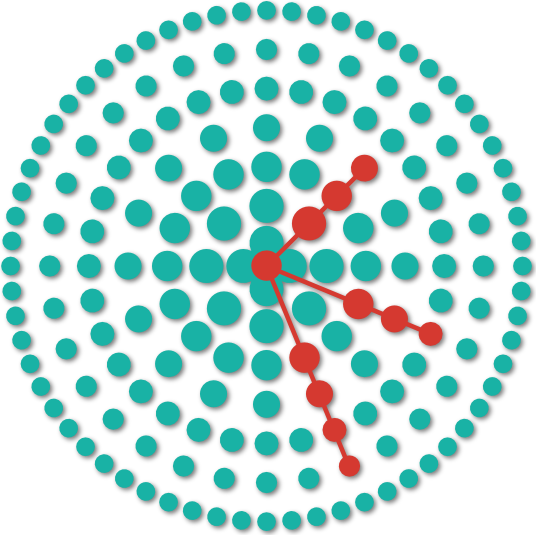What Is a Glioma?

Glial cells are a cluster of cells that surround and support the neurons of the brain and spinal cord. Abnormal growth of glial cells can result in tumors known as gliomas. Gliomas are the most common type of brain tumor. They make up about 30 percent of central nervous system tumors and about 80 percent of malignant brain tumors. Although gliomas generally affect older individuals, some glioma subtypes, such as pilocytic astrocytoma, are more common in children. Pilocytic astrocytomas are relatively benign, while others tend to be malignant.
Glioma symptoms vary based on the tumor’s location. For instance, depending on the vicinity of vital structures, gliomas of the brain may cause headaches, seizures, vomiting, personality changes, cognitive impairment, and other symptoms. Optic nerve gliomas (tumors on the nerve that carries visual signals from your eyes to your brain) may cause vision problems or other sensory disturbances, such as hallucinations. Spinal cord gliomas can cause numbness, pain, and/or weakness in the extremities.

Figure 1: Artist rendition of a patient with a frontal lobe glioma.
Who Is Likely to Get a Glioma?
Gliomas occur when certain types of cells (glial cells) accumulate genetic mutations (changes in the DNA) which make them resistant to our body’s natural control system. Mutations leading to gliomas can occur sporadically or accumulate through exposure to various individual, environmental, and lifestyle risk factors. Gliomas have not been found to be hereditary, although a family history of glioma may increase the risk of occurrence. Several risk factors of gliomas have been implicated in the literature with varying levels of support:
-
Age: Certain types of gliomas (pilocytic astrocytomas and ependymomas) typically occur in childhood, while other types of gliomas (glioblastomas and oligodendrogliomas) occur more frequently in adults. Brain tumors are more likely to occur with advanced age.
-
Sex: Gliomas tend to occur more frequently in males, although the difference is slight when compared to other types of tumors.
- Genetics: A family history of glioma may increase risk of glioma occurrence. Patients with rare inherited cancer syndromes (i.e., neurofibromatosis, tuberous sclerosis, Lynch syndrome, Li-Fraumeni syndrome, Melanoma-neural system tumor syndrome, Ollier disease, and Maffucci syndrome) may be more likely to develop gliomas.
- Radiation: Ionizing radiation (such as nuclear radiation, electromagnetic waves, and even x-rays) may contribute to the formation of brain tumors; however, the link between radiation and glioma is not unique.
- Diet: Oxidants within our diets may increase the risk of developing gliomas. It is advisable to maintain a diet with sufficient fruits, vegetables, and natural anti-oxidants while avoiding large amounts of processed and nitrate-laden foods.
- Viral Infections: Some viruses can alter our body’s DNA. While studies are underway, there is no conclusive evidence to suggest that viral infections lead to the occurrence of gliomas.
- Stress: Acute and chronic stress have been shown to promote tumor growth in several laboratory studies; however, there is no concrete evidence to link stress to glioma occurrence, growth, or reoccurrence.
Why should you have your surgery with Dr. Cohen?
Dr. Cohen
- 7,500+ specialized surgeries performed by your chosen surgeon
- More personalized care
- Extensive experience = higher success rate and quicker recovery times
Major Health Centers
- No control over choosing the surgeon caring for you
- One-size-fits-all care
- Less specialization
For more reasons, please click here.
How Are Gliomas Classified?
There are several types of gliomas which are classified according to the type of glial cells from which they originate.
- Astrocytes: These star-shaped cells, which cause astrocytomas and glioblastomas, nourish neurons and regulate the biochemical balance of the brain. Astrocytomas, the most common form of glioma, usually occur in the brain and occasionally in the spinal cord. Glioblastomas, previously referred to as glioblastoma multiforme, are aggressive and malignant Grade IV tumors.
- Ependymal cells: These cells line cavities in the brain and spinal cord that produce cerebrospinal fluid (CSF) to cushion the CNS and transport nutrients and waste. These cells can cause ependymomas, a rare form of glioma found mostly in children.
- Oligodendrocytes: These cells produce myelin, a substance that coats neurons (the wires that connect brain cells together) to increase transmission speed. Oligodendrogliomas can arise from oligodendrocytes.

Figure 2: Depiction of the types of glial cells including microglia, astrocytes, ependymal cells, and oligodendrocytes.
Gliomas are further classified by grade, which determines how the abnormal tumor cells appear under a microscope. In order to determine the grade of a glioma, a biopsy specimen must be collected. The World Health Organization (WHO) classifies brain tumors on a 4-point scale according to how aggressive (fast-growing, cancerous) they are, as follows:
- Grade I: These gliomas are made up of slow-growing cells. Thus, they are typically very responsive to treatments and have the highest survival rate.
- Grade II: Although these tumors are composed of relatively slow-growing cells, they are still capable of invading normal tissues. Thus, they can become malignant over time.
- Grade III: If a glioma contains actively reproducing cells, these cells can infiltrate normal brain tissue and transform to a higher grade, even after removal.
- Grade IV: At this stage, cells are rapidly reproducing abnormally structured cells. Therefore, Grade IV is the most malignant grade of tumors. These tumors often form new blood vessels to maintain growth and invade surrounding nervous tissues.

Figure 3: Gliomas (left) infiltrate the normal brain whereas other tumors such as meningiomas (right) displace the normal brain.
Are Gliomas Treatable?
Treatment options available to patients diagnosed with gliomas have continued to improve and evolve over time. Depending on the type and grade of tumor, gliomas may be observed or treated with a combination of focused radiation, chemotherapy, and surgery. Lower-grade gliomas (Grade I and II) have better outcomes than high-grade gliomas (Grade III-IV). While a glioma diagnosis is not always terminal or fatal, treatment strategies are complex and should be discussed at length with a multi-disciplinary care team.











